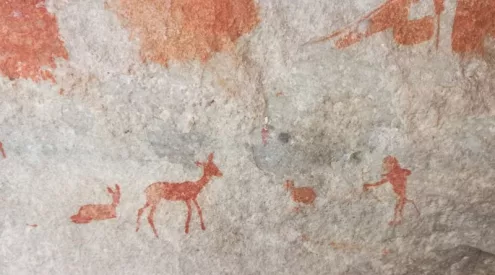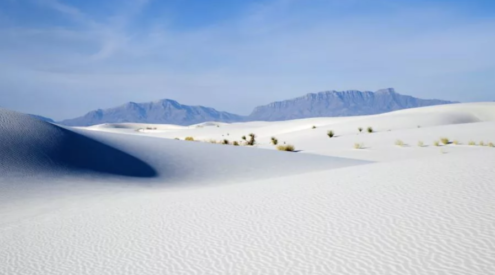Notorious for its long queues, lack of staff and chaotic processing, Beit Bridge border post strikes fear into the hearts of many. The key, we found, is to inspire more confusion by saying, ‘No, we have no vehicle, we are going through on bicycles.’
In a state of pity, horror and inability to work out what one does when there is no registration plate the officials hurried us through and we’d crossed from South Africa into Zimbabwe in a little over 30 minutes [returning: how to negotiate Beit Bridge border crossing in less than an hour].
The stretch of road from Beit Bridge to the Bubye River was accurately referred to as ‘donkey dodging no-man’s land’ by a local Zimbo. Hot, dry and dusty, the meagre veld was decorated in litter and livestock; mostly donkeys and some evidently less talented at truck-dodging than others. We pushed hard to cover the 90km gradual rise to the Bubye and finished the day in the swimming pool of the Lion and Elephant Motel. The ‘L&E’ is an age-old halfway stop on the Harare – Johannesburg road, where watching baboons and bush buck from the restaurant veranda reminds one that, even here, Africa is just that little bit wilder.
North of the Bubye the surrounding bush is less over grazed and messy. Being a Monday the issue of truck dodging became busier and we pulled into Rutenga ‘Growth Point’ in search of a cold Coke to ease the nerves. ‘Growth Point’ is a term fondly used in Zimbabwe to describe a collection of basic (almost empty) shops and perhaps a petrol station that have sprung up in the middle of nowhere for no apparent reason. Sadly, the only evidence of growth in these places is the number of unemployed people sitting around under trees. With an unemployment rate of over 80%, taking it easy under a tree has become a bit of a national past time, most of whom are more than keen for a chat with passing vagabond cyclists.
Our intended route north had us going southeast from Rutenga, away from the main Harare road and towards the warm bed of a local farmer who we’d been put in contact with. When, upon asking the locals, we found that said farmer was 80 km back at Bubye River we were understandably dismayed. Luckily a local hunting operator cruised past and came to our rescue with some convoluted directions to his campsite 30 km further north. Three hours and a 20km sight-seeing detour later, we stopped exhausted at Ashley and Jan Kotze’s gate; hoping for further directions. The pain was entirely worth it! Ashley was home alone that night and felt safer with a few extra people in the house. She fed us a hearty meal and we slept soundly – so soundly that we didn’t hear the dog barking whilst a sheep was being stolen! Woops.
The road from the Runde towards Musvingo is beautiful. The mighty granite batholiths, for which Zimbabwe is so famous, begin to erupt from the earth and the Mopane veldt to gives way to the beautiful Brachystegia species of Miombo woodland. Of course the fact that we were now crawling up some painful climbs meant we had a bit more time to look around too. Our first 100+km day brought us to Bondofoli mission station, on the old Musvingo road. Warmly received by Father Rudolph, we were allowed to camp in their grounds and made use of their kitchen. The mission, which is approaching its 50th anniversary, continues to provide much needed services to the community. Consisting of a primary school, a church and a teachers’ college (which attracts students from across Zimbabwe) the mission currently has 700 students enrolled. It was interesting to meet Sister Helen, a German Nun who has been living at the mission for 20 years. Her mannerisms and way of speech were such an eclectic mix of German and Zimbabwean cultures that we had a good chuckle when she reacted to our story with an “Eish, eish eish, how!” Our conversations with the Zimbabwean born priests were interesting; to hear how they felt about the standard and future of education in Zimbabwe and its superiority to that offered in rural South Africa. We also found it sad to hear that, despite the incredible friendliness we were experiencing up here, they often felt targeted and alienated when visiting South Africa, to the point of being scared to drive in SA with Zimbabwean number plates!
Wednesday broke a cloudless day and temperatures rose rapidly. Our route was an endless series of short, steep rolling hills and the legs were clapped from the day before. Forty kilometres later we were melting on the saddle when we pulled into the immaculately kept grounds of The Great Zimbabwe Hotel; one of those enclaves of British Imperial Africa. We felt a little out of place swimming in the pool in our cycling kit and eating our lunch (boiled eggs, baked beans and 2-day old bread) on the patio. Still all the staff were gracious, polite and chatty and we felt like new people when we rolled down the hill to the camp site.
We spent the last few hours of the day exploring the Great Zimbabwe Ruins. The ruins experience is quite fascinating. A small museum allows one to get some background on the history, culture and speculated purposes of the mighty stone structures. Built entirely without mortar the ruins are the largest pre-colonial structures in sub-Saharan Africa. Moving from there into the ruins themselves, it is an eerie feeling to walk the narrow, ancient stone passages. Watching the sun set over the beautiful plateau from atop the Hill Complex, one gets a feeling for how these sacred places and their people almost seem born of the granite boulders themselves. We could hear distant singing floating up from the valley below; as it must have done all those hundreds of years before. This world heritage site is a truly special place, a historical and ethnic heart of the Shona people and of modern Zimbabwe herself.

















